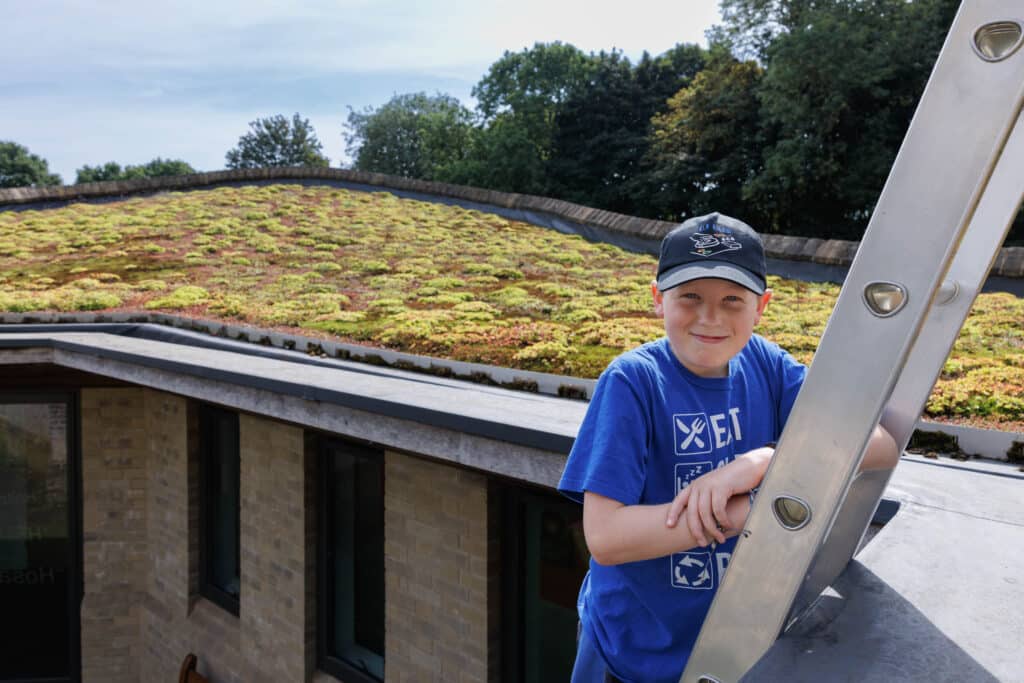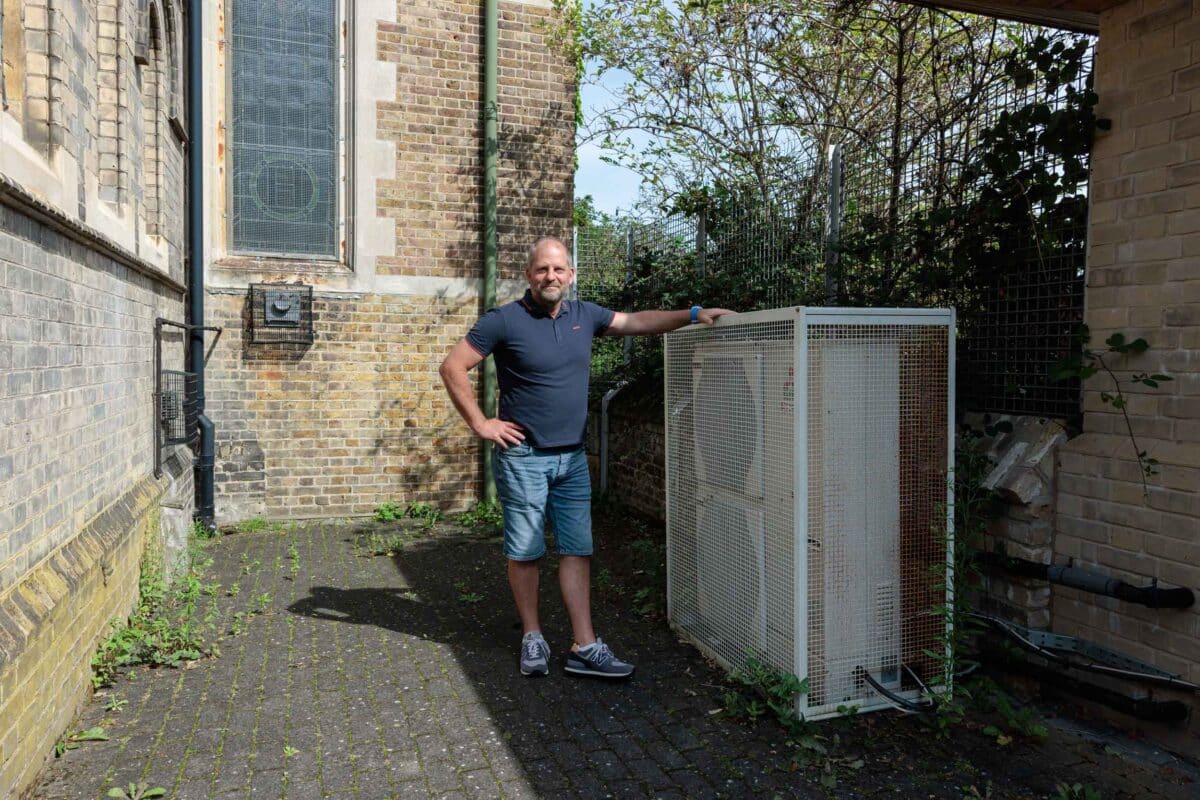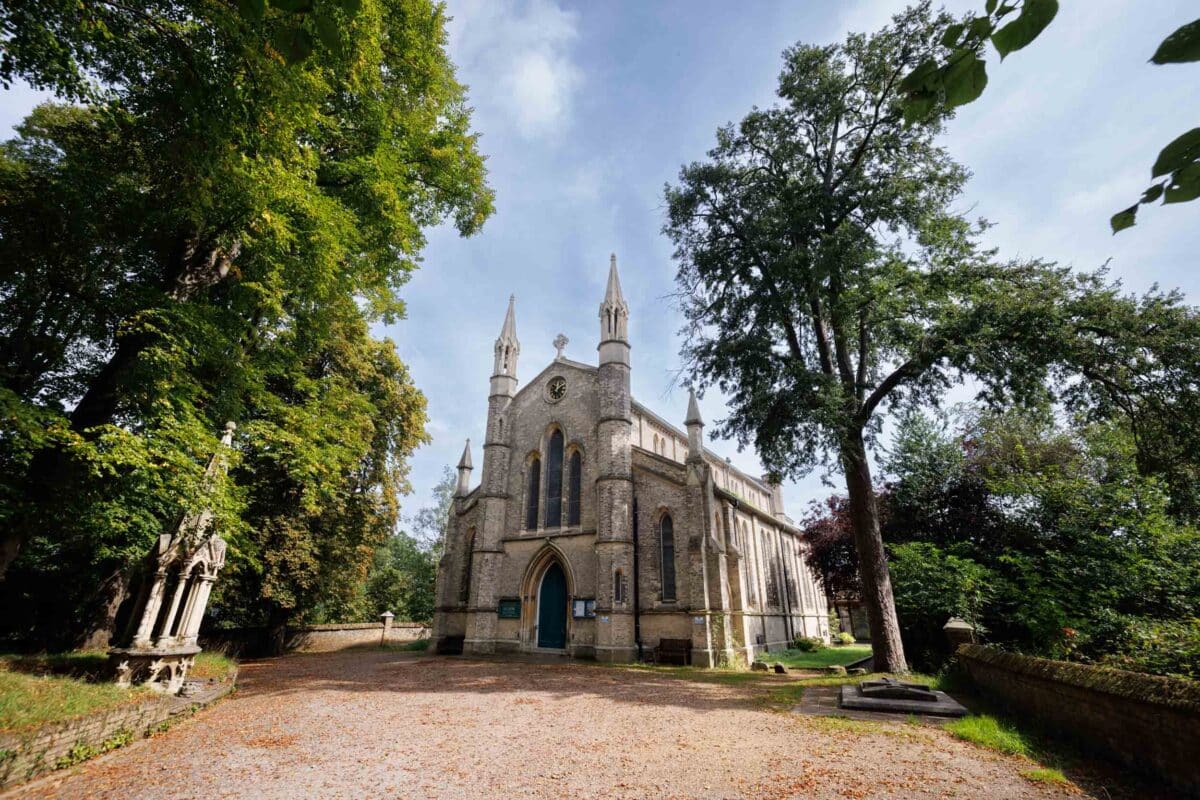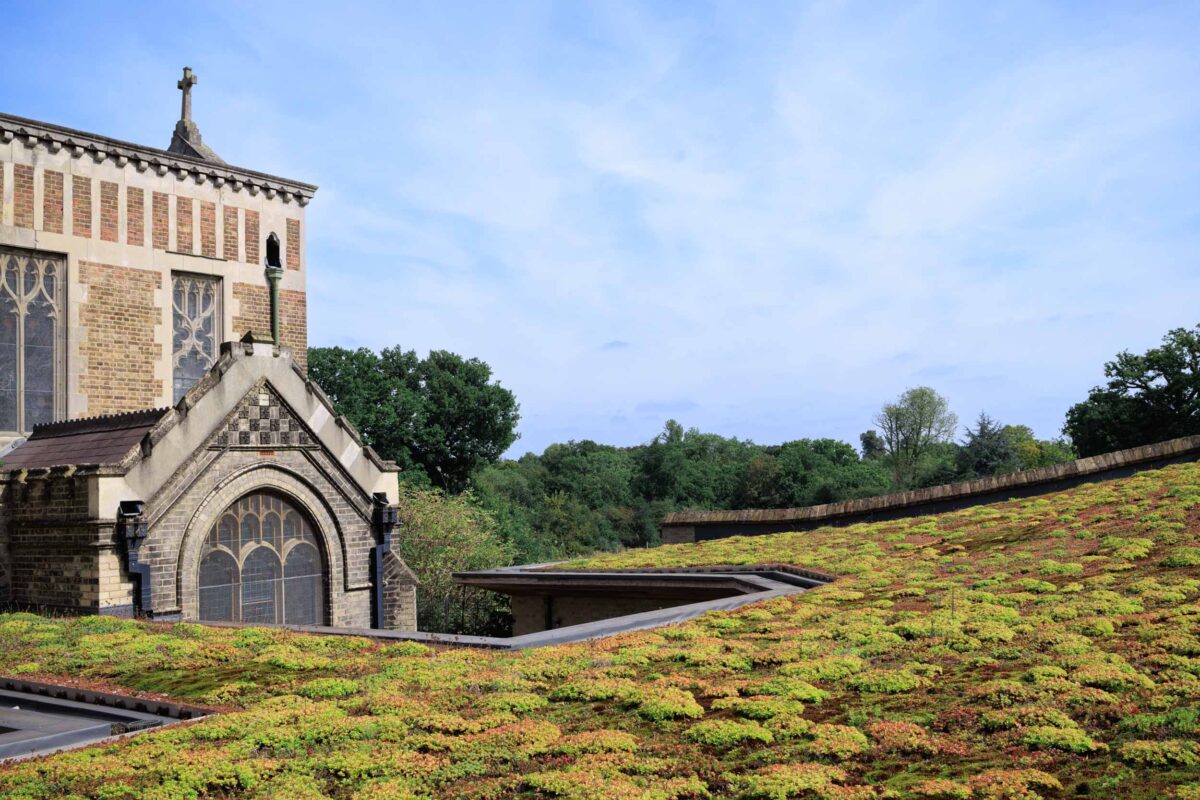How a parish ‘just reducing their bills’ created a model EcoBuild that’s a whisker away from Net Zero.
As happy accidents go, it’s got to be up there with the best. Nick Munt, warden of Jesus Church in Enfield, looks sheepish as he explains, “Being honest, we never set out to be environmentally friendly. Our plan was to be sustainable from a ‘running it’ point of view, to make it cheaper for us to run the building.” Happily, as many churches are discovering on their pathway to Net Zero, the two things go hand in hand.

So, the gold standard Eco design? “That came from the architects,” cheered on by the previous, conservation-aware warden.
In 2009 when the Charis Centre opened, the plans were ahead of the curve. Located behind the imposing brick church that strains towards the sky, the Charis Centre is a welcoming, light, glass building burgeoning with energy efficiencies. The airy feel belies thick walls, super insulated, which hold up a roof of pure delight, planted with small wild flowers and sedums. 40cm thick, the ‘Green Roof” keeps all the heat in the building, whilst enhancing local biodiversity. Not all of it is welcome, mind you – Nick explains that birds sometimes add to the flora by depositing seeds, and every couple of years he has to fetch a ladder and pull up a sapling. A small price to pay for the incredible insulation it provides, not to mention the beauty.
But there’s more. Round the back is the white cage of a single Air Source Heat Pump, which has been steadily heating the Centre for 15 years now, with (apart from one small repair) no signs of stopping. So would Nick recommend it for other church halls?

Definitely. “The building is lovely and warm. No-one knows the heat pump’s here, to be honest, it runs so well.” It’s connected up to pre-programmable underfloor heating, set out in three zones, so there’s an even warmth throughout. “But you can’t use it as your sole source of hot water,” Nick warns. It’s fine for washing hands, but when it comes to doing the washing up it’s not quite hot enough. They used to supplement it with a kettle, but now they’ve got an energy efficient self-heating tap, which has proved to be the perfect combo.
“We didn’t particularly notice a surge in energy cost, when this was added to the church building,” Nick divulges. It’s staggering. The thought of running a building and not noticing the energy bill rise is hard to get your head round, especially when you compare it to the £200 in gas they shell out per service to heat the church.

Photos by Brendan Foster Photography
Article author Alison Moulden is helping churches across the Diocese reach Net Zero Carbon.
